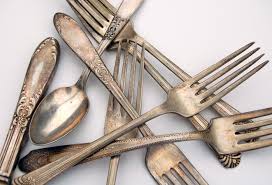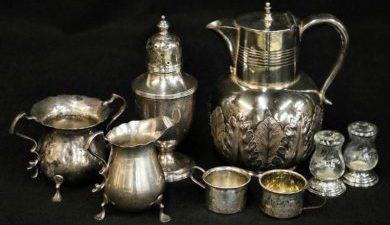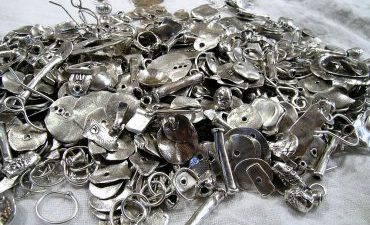
STERLING
FLATWARE AND HOLLOWWARE
Go To → Silver Plate Go To → Pewter
Silver Plate Buyers is always purchasing sterling material of various quantities. From trailers to boxes, we buy it all.
Below is a guide to help you figure out if your flatware, hollowware, or jewelry is sterling, and what to do with it.
Sterling Flatware
Flatware is a generic term applied to forks, spoons, knives and other utensils used to serve and eat food.


Sterling Hollowware
It refers to serving pieces and tableware such as sugar bowls, teapots, pitchers, butter dishes, creamers, etc.
Sterling Jewelry
It refers to necklaces, rings, bracelets, and earrings.


How Can I Tell If My Item Is Sterling Silver?
What is Sterling?
Sterling silver is 92.5% pure silver and 7.5% other metals. Since it’s silver content is higher it is worth more than silver plate.
Sterling alloy originated in continental Europe and was being used for commerce as early as the 12th century in what is now northern Germany. In Colonial America, it was used for currency and general goods as well. Between 1634 and 1776, some 500 silversmiths created items in the “New World” ranging from simple belt buckles to ornate coffee pots.
Normally there are markings on the bottom of your piece that will tell you if it is Sterling. Look for words like sterling silver, Ster., 925, .925, S925. These all fall under that category of sterling and are something that we buy. Please Note: Not all things that say Sterling, are Sterling. There are manufacturers that have Sterling in their name.
What are Hallmarks?
Hallmarks are markings on a piece of sterling silver that will indicate certain information about the piece. They can and may indicate the purity of the silver alloy used, identify the silversmith or company that created the piece, or indicate the date and/or location of the manufacturer or tradesman.
Another good way to tell if it is silver plate and not just steel is by sticking a magnet to it. If the magnet sticks, then it isn’t worth sending. If it does not stick to a magnet, then you can send it. There is an exception to this rule. Sterling knives will have a steel piece inside it holding the handle and blade together. If your sterling knife is magnetic, it is still okay to send.
